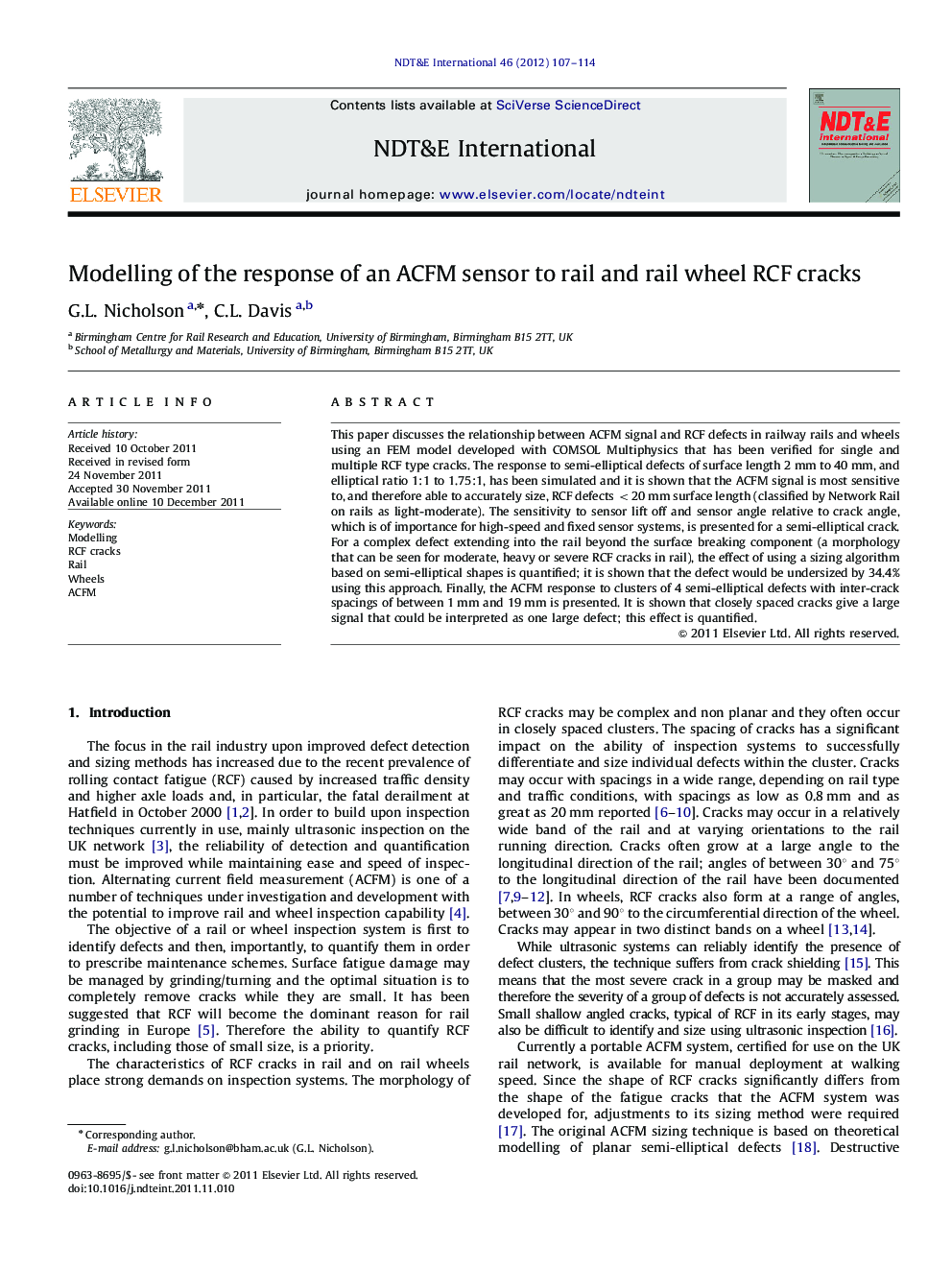| Article ID | Journal | Published Year | Pages | File Type |
|---|---|---|---|---|
| 295299 | NDT & E International | 2012 | 8 Pages |
This paper discusses the relationship between ACFM signal and RCF defects in railway rails and wheels using an FEM model developed with COMSOL Multiphysics that has been verified for single and multiple RCF type cracks. The response to semi-elliptical defects of surface length 2 mm to 40 mm, and elliptical ratio 1:1 to 1.75:1, has been simulated and it is shown that the ACFM signal is most sensitive to, and therefore able to accurately size, RCF defects <20 mm surface length (classified by Network Rail on rails as light-moderate). The sensitivity to sensor lift off and sensor angle relative to crack angle, which is of importance for high-speed and fixed sensor systems, is presented for a semi-elliptical crack. For a complex defect extending into the rail beyond the surface breaking component (a morphology that can be seen for moderate, heavy or severe RCF cracks in rail), the effect of using a sizing algorithm based on semi-elliptical shapes is quantified; it is shown that the defect would be undersized by 34.4% using this approach. Finally, the ACFM response to clusters of 4 semi-elliptical defects with inter-crack spacings of between 1 mm and 19 mm is presented. It is shown that closely spaced cracks give a large signal that could be interpreted as one large defect; this effect is quantified.
